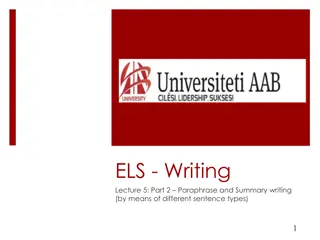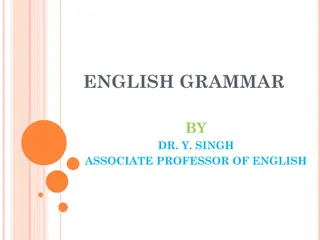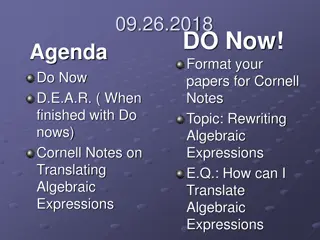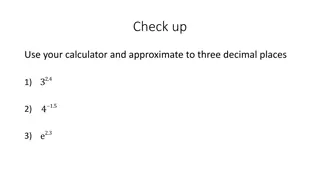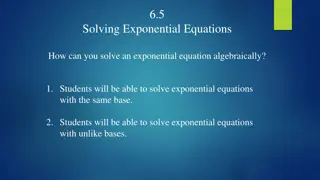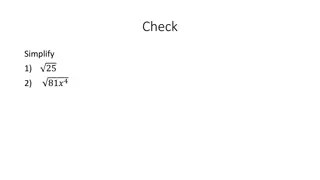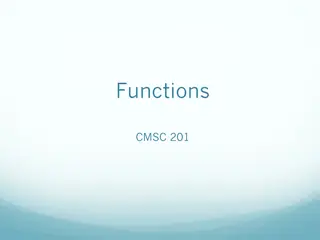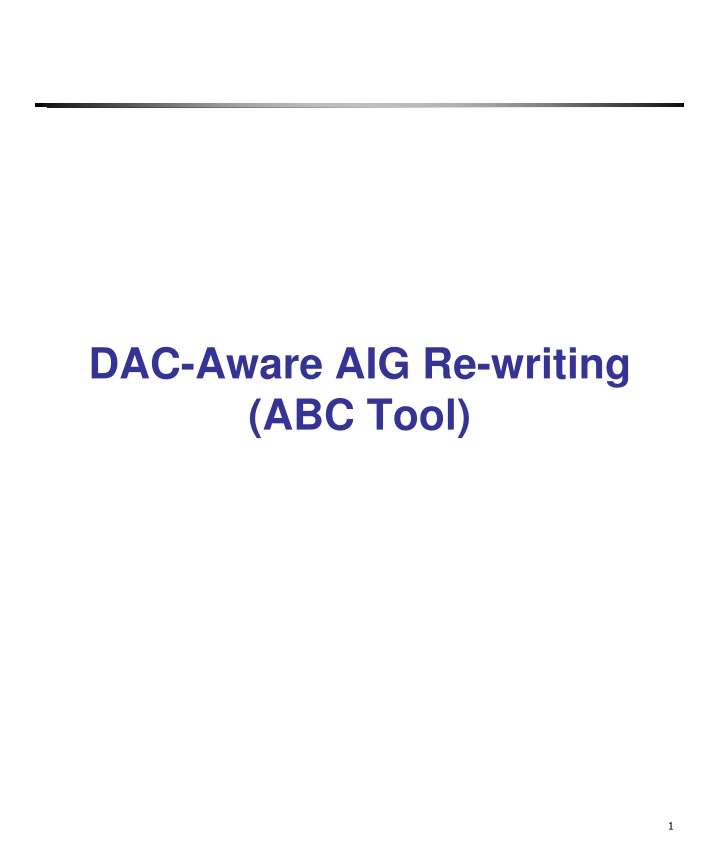
AIG Rewriting and Structure Basics
Understand AIG (And-Inverter Graph) structures, rewriting techniques, and cut feasibility in logic networks. Learn about deriving baseline AIG, different structures for the same function, rewriting algorithms, and rule-based transformations for AIG circuits.
Download Presentation

Please find below an Image/Link to download the presentation.
The content on the website is provided AS IS for your information and personal use only. It may not be sold, licensed, or shared on other websites without obtaining consent from the author. If you encounter any issues during the download, it is possible that the publisher has removed the file from their server.
You are allowed to download the files provided on this website for personal or commercial use, subject to the condition that they are used lawfully. All files are the property of their respective owners.
The content on the website is provided AS IS for your information and personal use only. It may not be sold, licensed, or shared on other websites without obtaining consent from the author.
E N D
Presentation Transcript
DAC-Aware AIG Re-writing (ABC Tool) 1
And-Inverter Graph And-Inverter Graph (AIG) Simple structure And-Gates as nodes (shown as circles) with two inputs as edges (shown as arrows) Inverter edges marked with a dot Used in ABC 2
AIG Structure A directed graph where node = and gate edge = wire circle on edge = inverter F = (a c ) d d a c 3
Example Ex: y = f( x1,x2,x3) =( (x1 x2 ) (x2 x3) ) = ( x1 x2 ) (x2 x3) 4
To Derive a Baseline AIG Find SOPs and then factored forms of nodes in a logic network Convert AND and OR gates of factored form into 2-input ANDs and inverter using DeMorgan s rule Apply structural hashing during AIG construction to ensure that no two AND gates have identical pairs of incoming edges 5
Different AIG Structures for the Same Function F = a b c 6
A Simple Example of AIG Rewriting A rule based transformation 7
A Cut A cut of C of node N is a set of nodes of the network, called leaves, such that each path from PIs to N passes at least one leaf A trivial cut of the nodes is the node itself A cut is K-feasible if the number of leaves does not exceed K 9
An Example of 4-feasible Cut Find subfunctions rooted at F F a 4-feasible cut not a cut a c a d b c 10
Re-Writing Algorithm Step 1: Pre-compute all AIG implementations of 4-input functions and store them in a table 2164-input functions 222 equivalence classes (NPN) 40 found experimentally to lead to improvement 4-input function stored using 16-bit string (signature) AIG subgraphs stored in shared DAC with about 2000 nodes 11
Step 2: - For a node, find its 4-feasible cuts - For each cut, find its NPN equivalence - compute the cost of a subgraph - choose the subgraph that leads to the largest improvement Nodes are processed in topological order Logic sharing is checked between the new subgraph and nodes already in the network using reference counters The old subgraph is dereferenced and the new subgraph is added 12
Delay-aware Re-writing A subgraph representation will not be accepted if the final logic level is increased Using slack of the node No negative slack after replacement 13
AIG Refactoring Produce deeper permutations of the logic structures Work for larger cuts, K, for 10 <= K <= 20 The function is converted to SOP, factored, AIGs built using baseline AIG rewriting 14
AIG Balancing For delay optimization A(BC) = (AB)C = (AC)B is applied to maximally reduce the number of levels of AIG One linear time sweep over the network in a topological order 15
Zero-cost Replacement Enabled Create new re-writing opportunity If the option is enabled, the node is replaced by a new subgraph if the cost = 0 Enabled later in the script 16
An Example of Script in ABC A re-writing script, resyn2, in abc.rc b (balance) ; rw (rewrite); rf (refactor); b; rw; rwz (re-write with 0 cost); b ; rfz (refactor with 0 cost); rwz; b Perform 10 times over the network 17


